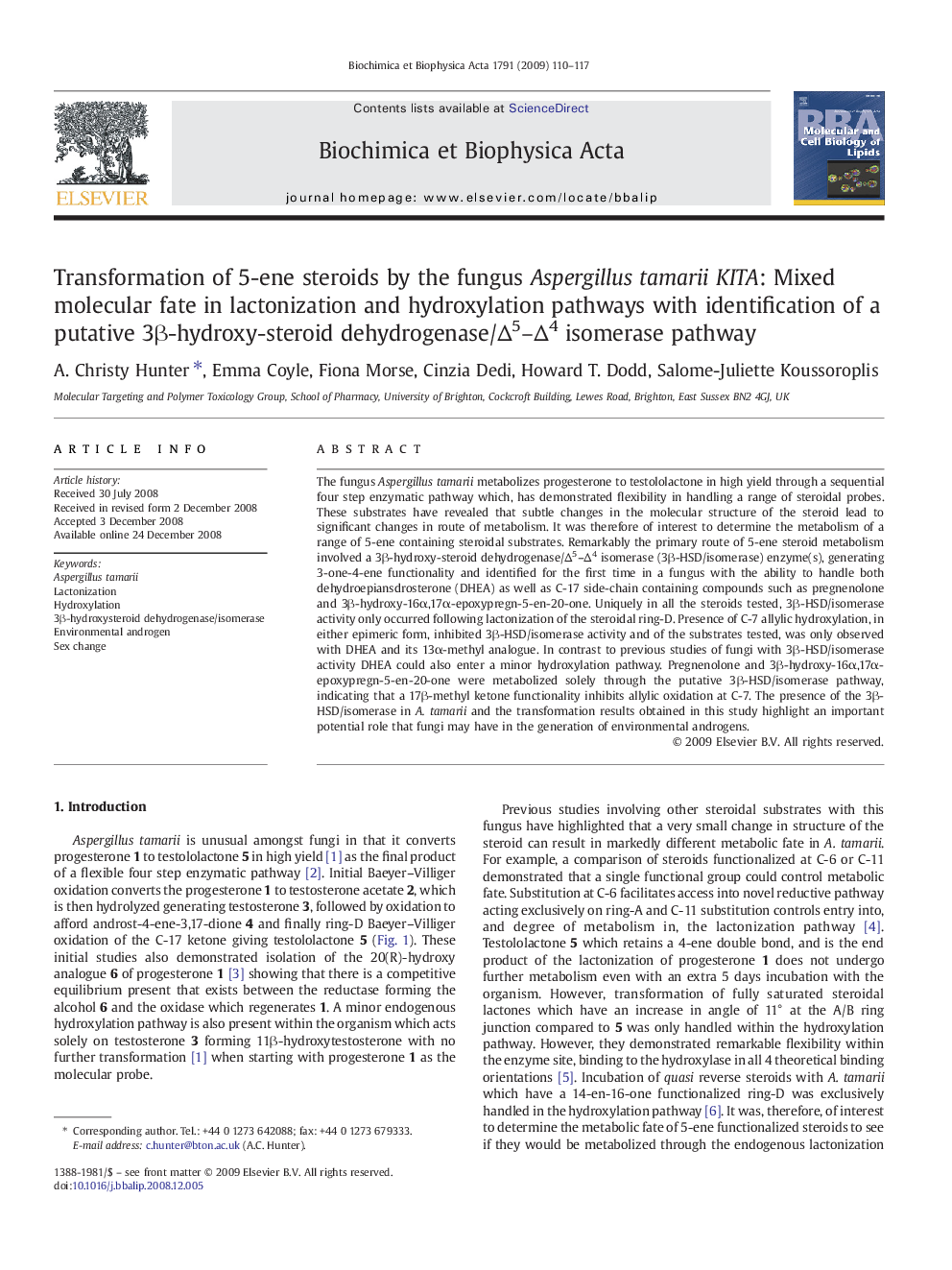| کد مقاله | کد نشریه | سال انتشار | مقاله انگلیسی | نسخه تمام متن |
|---|---|---|---|---|
| 1949894 | 1537792 | 2009 | 8 صفحه PDF | دانلود رایگان |

The fungus Aspergillus tamarii metabolizes progesterone to testololactone in high yield through a sequential four step enzymatic pathway which, has demonstrated flexibility in handling a range of steroidal probes. These substrates have revealed that subtle changes in the molecular structure of the steroid lead to significant changes in route of metabolism. It was therefore of interest to determine the metabolism of a range of 5-ene containing steroidal substrates. Remarkably the primary route of 5-ene steroid metabolism involved a 3β-hydroxy-steroid dehydrogenase/Δ5–Δ4 isomerase (3β-HSD/isomerase) enzyme(s), generating 3-one-4-ene functionality and identified for the first time in a fungus with the ability to handle both dehydroepiansdrosterone (DHEA) as well as C-17 side-chain containing compounds such as pregnenolone and 3β-hydroxy-16α,17α-epoxypregn-5-en-20-one. Uniquely in all the steroids tested, 3β-HSD/isomerase activity only occurred following lactonization of the steroidal ring-D. Presence of C-7 allylic hydroxylation, in either epimeric form, inhibited 3β-HSD/isomerase activity and of the substrates tested, was only observed with DHEA and its 13α-methyl analogue. In contrast to previous studies of fungi with 3β-HSD/isomerase activity DHEA could also enter a minor hydroxylation pathway. Pregnenolone and 3β-hydroxy-16α,17α-epoxypregn-5-en-20-one were metabolized solely through the putative 3β-HSD/isomerase pathway, indicating that a 17β-methyl ketone functionality inhibits allylic oxidation at C-7. The presence of the 3β-HSD/isomerase in A. tamarii and the transformation results obtained in this study highlight an important potential role that fungi may have in the generation of environmental androgens.
Journal: Biochimica et Biophysica Acta (BBA) - Molecular and Cell Biology of Lipids - Volume 1791, Issue 2, February 2009, Pages 110–117